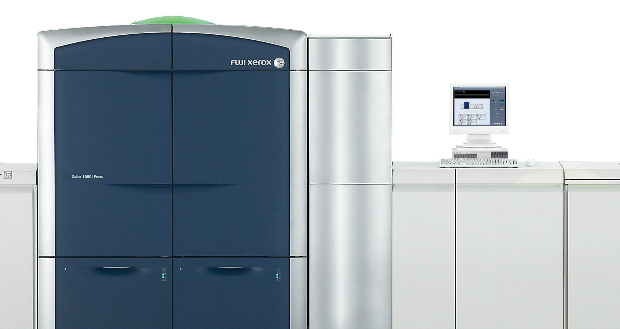
Fuji Xerox has developed gold and silver toners for its new production colour printer, the Color 1000i Press. The company has targeted the high end professional printing market with the Color 1000i Press, which becomes the industry’s first digital production printer to offer both metallic gold and silver colours, according to Fuji Xerox. It will begin sales on February 6 in Japan, before rolling out sequentially through the Asia Pacific. Developed through the company’s Emulsion Aggregation (EA) technology, the new gold and silver toners form ellipsoid-shaped inks with the flat reflective pigments completely covered by toner particles. It achieves a metallic appearance by orienting the reflective pigment particles in parallel to the print media, which allows the reflective pigments to reflect light after the image is fused onto the media. The reflective pigments do not allow light to pass through, which allows metallic printing on various media. Fuji Xerox says this process can deliver these printed products, which offset printing has traditionally produced, through a single production printer, adding that this can improve workflow and help print companies to expand their business through widening printing applications with the gold and silver toners.

The Fuji Xerox Color 1000i press
The company sees potential applications in catalogues, direct mails, flyers, postcards and business cards. These products, usually created in digital printing using cyan, magenta, yellow and black (CMYK), can now use the Color 1000i Press, and its specialty inks, to add marketing effects and improve the value added to each print, such as giving them a high-class look and seasonal sense. Fuji Xerox adds that the Color 1000i Press inherits the professional functions of the Color 1000 press, offering print productivity of 100 prints per minute with media as thick as 350gsm. The new printer comes equipped with Fuji Xerox’s full width array which automates printing adjustments, such as colour calibration and front and back alignment. The company says this reduces the operator’s workload and improves working efficiency in making printing adjustments. It also uses the PX 1000 printer server 3, which enables higher processing speeds for digital data, assisting with faster processing of high volume and variable data.
Comment below to have your say on this story.
If you have a news story or tip-off, get in touch at editorial@sprinter.com.au.
Sign up to the Sprinter newsletter
